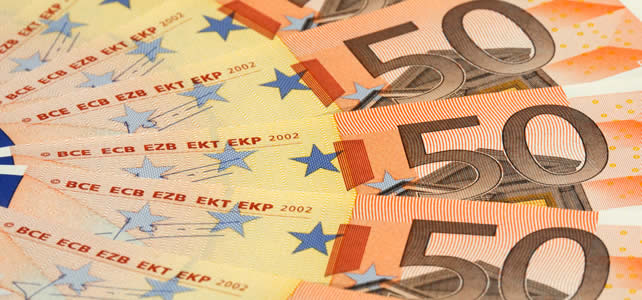
Following Cyprus accession to the EU, on 1st May 2004, the government of the Republic of Cyprus undertook the obligation to join the Economic and Monetary Union and to adopt the euro as soon as the necessary requirements are fulfilled.
The Ministry of Finance and the Central Bank of Cyprus have taken on this opportunity and prepared the National Changeover Plan for the adoption of the euro aiming at informing promptly all the citizens living in Cyprus about the introduction of the euro and its impact in their everyday life.
The Strategic Communication Campaign for the adoption of the euro aims at informing every single citizen in Cyprus about the transition from the Cyprus pound to the euro. Moreover it aims at clarifying that this change is very simple and that it is a process which involves us all personally.
One euro is divided into 100 cent.There are eight euro coins: 1, 2, 5, 10, 20 and 50 cent, €1 and €2. The designs on one side of the coins are common to all the countries of the euro area, while the other side reflects national identities. Of course, all euro coins can be used in all euro area countries, irrespective of their national side.
The eight euro coins vary in size, weight, material, colour and thickness. Some additional innovative features have also been included to help users, particularly blind and partially sighted people, to recognise the different denominations. For instance, each consecutive coin in the series has a different edge. A detailed quality management system ensures that all euro coins are interchangeable throughout the euro area and conform to the standards necessary for their use in vending machines.
Particular care has been taken in the production of the higher-value euro coins (€1 and €2) to protect them against counterfeiting. Their sophisticated two-colour design makes them difficult to counterfeit, as does the lettering around the edge of the €2 coin.
Common side
The common side of the eight euro coins has three different designs:
€2 and €1 (high-value coins) show the European Union before its enlargement on 1 May 2004
50, 20 and 10 cent show the individual countries of the European Union before its enlargement on 1 May 2004 .
5, 2 and 1 cent show Europe in relation to Africa and Asia on a globe.

Diameter (mm): 25.75
Thickness (mm): 2.20
Weight (g): 8.50
Shape: Round
Colour: Outer part: white; inner part: yellow
Composition: Outer part: copper-nickel; inner part: three layers: nickel brass, nickel, nickel brass
Edge: Edge lettering, fine milled

Diameter (mm): 23.25
Thickness (mm): 2.33
Weight (g): 7.50
Shape: Round
Colour: Outer part: yellow; inner part: white
Composition: Outer part: nickel brass; inner part: three layers: copper-nickel, nickel, copper-nickel
Edge: Interrupted milled

Diameter (mm): 24.25
Thickness (mm): 2.38
Weight (g): 7.80
Shape: Round
Colour: Yellow
Composition: Nordic gold
Edge: Shaped edge with fine scallops

Diameter (mm): 22.25
Thickness (mm): 2.14
Weight (g): 5.74
Shape: Spanish flower shape
Colour: Yellow
Composition: Nordic gold
Edge: Plain

Diameter (mm): 19.75
Thickness (mm): 1.93
Weight (g): 4.10
Shape: Round
Colour: Yellow
Composition: Nordic gold
Edge: Shaped edge with fine scallops

Diameter (mm): 21.25
Thickness (mm): 1.67
Weight (g): 3.92
Shape: Round
Colour: Red
Composition: Copper-covered steel
Edge: Smooth

Diameter (mm): 18.75
Thickness (mm): 1.67
Weight (g): 3.06
Shape: Round
Colour: Red
Composition: Copper-covered steel
Edge: Smooth with a groove

Diameter (mm): 16.25
Thickness (mm): 1.67
Weight (g): 2.30
Shape: Round
Colour: Red
Composition: Copper-covered steel
Edge: Smooth
There will be three national sides on the euro coins that will be minted by the Republic of Cyprus – one for the small denominations (1, 2 and 5 cent), one for the medium denominations (10, 20 and 50 cent) and one for the high denominations (€1 and €2). The themes for the three sides are drawn from three aspects characterising the country: nature, history and civilisation .
On the 1, 2 and 5 cent coins, the national side will depict the mouflon , as the most characteristic species of Cyprus ‘ wild life.
On the 10, 20 and 50 cent coins, the national side will depict the ancient ship of Kyrenia , representing the island’s relationship with the sea and its importance in trade and maritime activities.
On the €1 and €2 coins, the national side will depict the idol from Pomos, a cross-shaped idol from the chalcolithic period (3000 B.C.) which is a characteristic example of Cypriot prehistoric art.
![]()


The three national sides of Cypriot euro coins
Source: www.euro.cy



